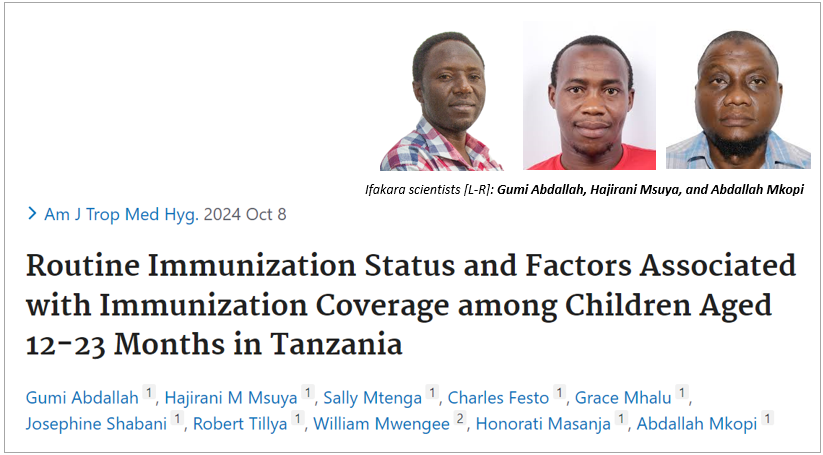
IMMUNIZATION: Leveraging satellite technology to boost child vaccination coverage

After studying obstacles to universal immunization particularly in Tanzania’s rural areas, scientists have recommended improving existing vaccination coverage by optimizing the use of recommended interventions and satellite image technology in areas where immunization coverage is less than 80%.
New findings from a recent study published on the American Journal of Tropical Medicine and Hygiene, suggest improving existing vaccination coverage and optimizing the use of recommended interventions are required.
Less than 15% completed routine immunization
Fresh findings from this study, which aimed to assess routine immunization status and factors associated with its coverage among children aged 12-23 months, indicate that nationally, 85.5% of children in the studied group had completed the full recommended course of vaccines while 14.5% of the children didn’t complete routine immunization schedules in 2019.
“Tanzania has one of the highest rates of coverage of routine child immunization among sub-Saharan African countries. However, obstacles to universal immunization still exist, particularly in rural areas of the country,” the scientists say.
Micro-planning tool recommended as well
Lead author, Gumi Abdallah and colleagues Hajirani Msuya, Sally Mtenga, Charles Festo, Grace Mhalu, Josephine Shabani, Robert Tillya, Honorati Masanja, Abdallah Mkopi (all from the Ifakara Health Institute) and William Mwengee from the World Health Organization (WHO) – Tanzania Office, also, recommend using “the periodic micro-planning tool”.
The tool, developed by global health organizations, is used by vaccination teams to ensure that immunization services reach every community. It helps identify priority communities, address obstacles to vaccination, and create work plans with tailored solutions to overcome these challenges.
The study was done in 31 regions involving caretakers of children in Tanzania, where a total of 4,560 households were visited.
The lead author says, “Combination of microplanning and satellite imagery/data, can improve planning, identification and mapping including vulnerable population to ensure inclusion in outreach or immunization services campaigns.”
More: About satellite data and imagery
Satellite data and imagery enable the creation of highly precise maps that can identify many settlements often overlooked by vaccination teams. These maps, combined with GIS tracking, allow immunization teams to better monitor their activities, reducing the chances of missing children in need of vaccines.
The population estimates derived from satellite data provide planners with a more accurate understanding of the number of children requiring vaccination. This enhanced level of detail ensures that immunization efforts are more targeted and efficient, ultimately improving vaccine coverage and reaching communities that might otherwise be missed.
More: About the micro-planning tool
Microplanning, developed by global health organizations, is a vital tool used by vaccination teams to ensure that immunization services reach every community. The tool helps identify priority communities, address obstacles to vaccination, and create work plans with tailored solutions to overcome these challenges. By using microplanning, teams can better allocate resources and ensure that no community is left behind in immunization efforts.
"Global health organizations" are prominent international entities that work to improve public health worldwide. These organizations often collaborate on creating tools like microplanning to support healthcare initiatives. Key players include: the WHO – which leads global health initiatives, including vaccination programs; the UNICEF, which focuses on children's health, including immunization efforts; Gavi, the Vaccine Alliance, which works to increase access to immunization in low-income countries; and Centers for Disease Control and Prevention (CDC), which provides technical expertise for global vaccination strategies.
These groups, along with local governments and health ministries, often contribute to developing tools like microplanning.
Read the publication here.
